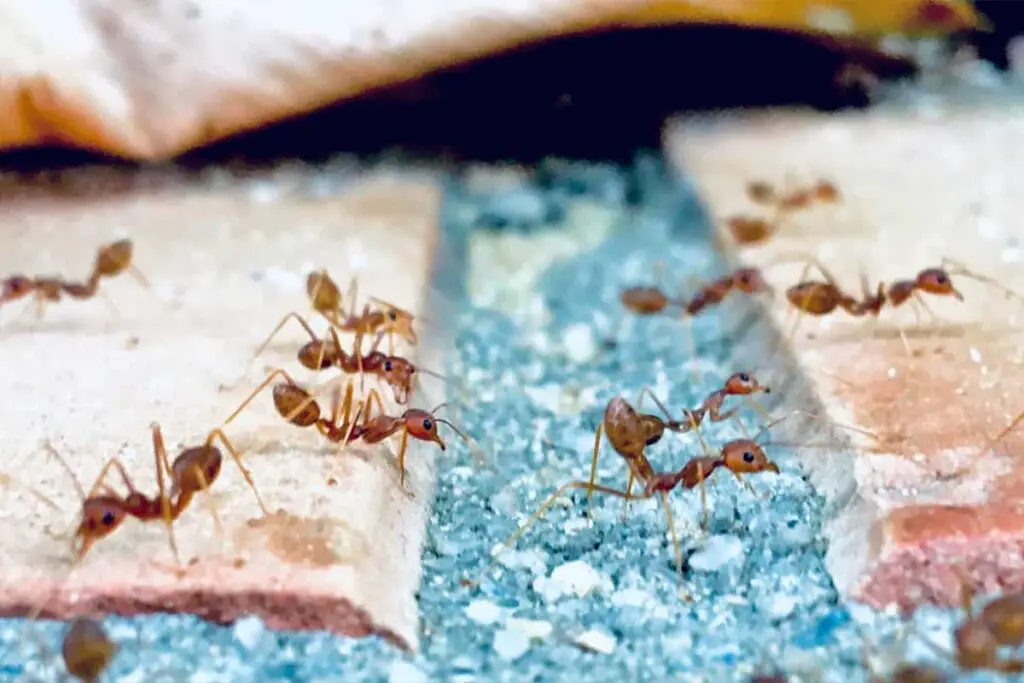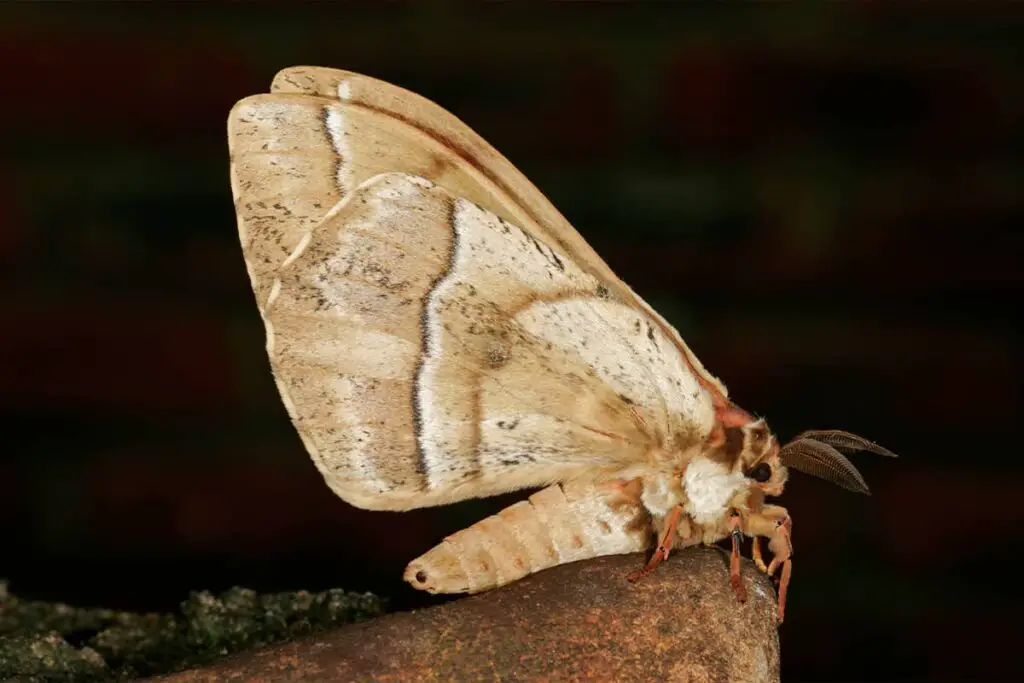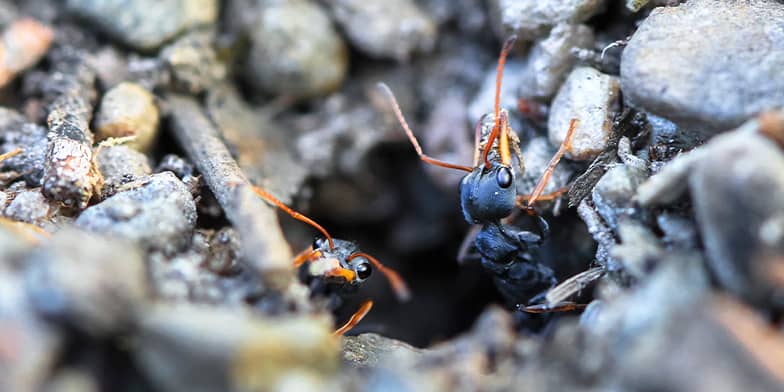
You may never know you have royalty living in your garden until you stumble across a humble ant mound. If you’re also very lucky you may catch a glimpse of that reclusive and all-important figurehead: the Queen Ant. If you do happen to spot (and identify) a queen ant, you may be wondering if she’s safe to handle. Will she defend herself?
As a mother to an entire colony, the queen holds a prominent role in the ant kingdom. She is more than capable of defending herself, and if you threaten her territory she will show her dissatisfaction with a nasty bite. Some queen ants also have a venomous sting, which can be much more painful.
The queen ant has multiple methods of defending herself. If the worker ants decide to evict her, as sometimes happens, it will take the whole kingdom to bring her down. To you or I (many times the size of a worker ant) the bites and stings can be painful, and the appropriate treatment should be administered as soon as possible.
What Happens if You Are Bitten by a Queen Ant?
Depending on the type of ant that has bitten you, the effects will range from a mild irritation to a burning sensation, swelling, and pain. This is because some ants, in particular fire ants, have a venomous bite (and a nasty sting, besides!)
These venomous attacks can lead to pus-filled blisters at the site that can last for weeks. It can then become infected and require medical attention.
Although for some, the blisters may dry up after seven days, for others, they can form a brown scar. This scar can last for many months, sometimes to the extent of becoming permanent.
What Happens if You Are Sensitive to Queen Ant Bites?
The sensitivity of a person to a queen ant bite or sting can significantly vary. If you are sensitive, you can end up having an allergic reaction to the venom, which can be very serious. The allergic reaction from an ant bite can lead to death if untreated.
Although rare, the bite can also cause some adverse effects like nausea, excessive sweating and itching, diarrhea, and in some cases, even the feel of lack of oxygen. If this does not settle, it would be advisable to seek medical attention.
Once you experience a venomous attack from an ant the first time, there is a 60% chance that you will not have the same experience the second time around.
If you find yourself having an extreme allergic reaction to ant bites, your doctor might recommend carrying an epinephrine auto-injector.
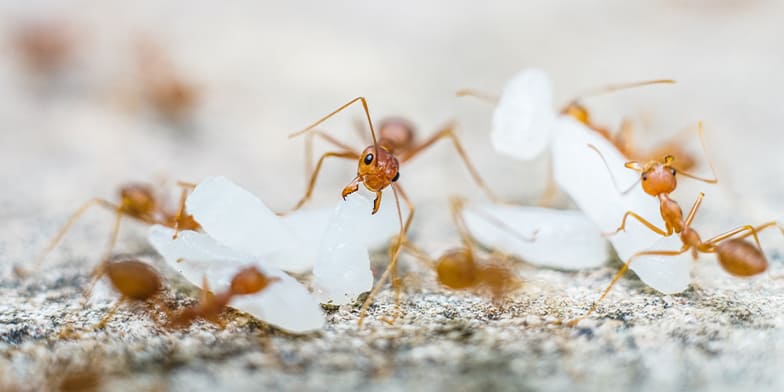
Treatment for Queen Ant Bites
If you’ve been bitten by a queen ant, make sure to examine the wound to check if there are any visible signs of venom or ant sting, which should be removed by wiping with Dettol and a ball of cotton wool. Apply a cold compress to reduce swelling for at least 20-minutes.
Avoid putting ice directly on your skin; instead, use an ice pack. Under all circumstances avoid using heat, as this will further aggravate the sting. Apply a soothing ointment like chamomile lotion or hydrocortisone cream.
After application, cover the infected area with a dry, sterile bandage. To manage an allergic reaction to the bite, take an antihistamine.
Home Remedies When Bitten by a Queen Ant
Often when an ant bites us we prefer not to visit a doctor due to what might be a low severity of reaction. Here are some home remedies using items that you probably already have in your cupboard. While these may provide some relief, if you are still experiencing severe pain or discomfort, or feel like you might be having an allergic reaction, it would be advisable to visit your doctor.
Lemon Juice
Squeeze half a lemon and collect its juice in a spoon. Mix the juice in water and apply to the infected area; leave for a while. Lemon juice helps reduce redness, swelling, and inflammation.
Honey
Honey has rich antibacterial properties, which is beneficial in addressing allergic reactions caused by the bite before they surface. Apply the area with a little bit of honey and leave to dry.
Vinegar
Vinegar works just as well as honey. Apply a ratio of 1:1 vinegar and water, and apply to the bite.
Baking Soda
Apply a thick paste of baking body with water to the sting, leave to dry. Baking soda will help combat the redness and inflammation.
Toothpaste
Apply some toothpaste to the infected area and leave. Be mindful not to over-apply as some toothpastes are pretty strong. The toothpaste will offer a cooling effect.
Salt
Salt is the most active ingredient and is readily available at home. Mix a paste of salt and water and apply to the site of the bite. Salt will help reduce swelling and inflammation.
Cucumber
Place a slice of cucumber on the bite and feel the cooling effect occur. Probably don’t eat the slice afterwards, though.
Herbal Tea
Herbal tea applied to the bite can offer soothing and relief. The tea is full of antioxidants which will help with blistering, inflammation, and swelling.
Why Would a Queen Ant Bite?
A queen ant is generally a peace-loving creature, as is the case of most (I’m looking at you, fire ants) other ants, and they will prefer not to harm or disturb you. Her behavior will change only if she feels threatened for any reason.
The worker ants must protect their queen; if her colony is at risk and the situation becomes volatile, she will step in and counterattack. Her presence is scarce; unless an ant mound is destroyed, it’s unlikely you’ll see her.
How To Identify A Queen Ant
The queen ant will be noticeably larger than a regular ant. In most ant colonies, the queen is born with wings. If her wings have shredded, there will be distinct small bumps jutting from her body.
The queen ants will also have a larger thorax than the worker ant. The thorax is the part that bridges the neck and head to the abdomen. The thorax also supports the wings, which will be bulkier than a worker ant.
Another factor to consider is that queen ants are likely to be found in the center of the ant nest. They tend to like moist areas, and can often be found in rotting wood. You might also notice other ants carrying food towards her.
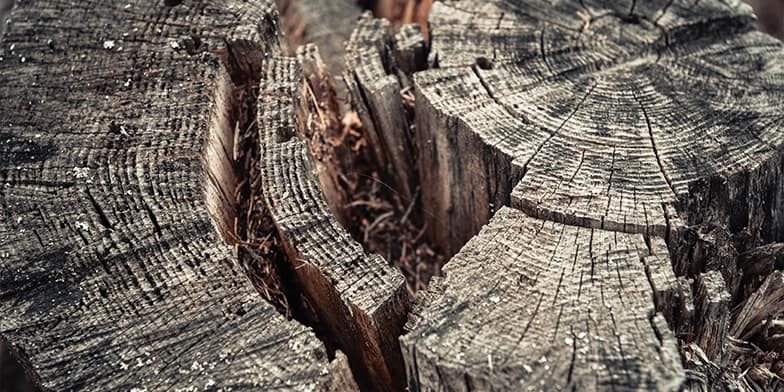
How Can I Prevent Ants From Invading My Home or Garden?
Queen ants can produce up to a million offspring in their lifetime, which can prove a problem if those same offspring are invading our homes, or disrupting the aesthetics of our garden with their mounds.
Here are a few simple ways that you can keep ants at bay.
- Keep food sealed
- Eliminate excess moisture
- Identify the entry points
- Use commercial domestic-grade ant control methods like baits and sprays.
- In severe cases where the situation is out of control, contact an exterminator.
Wrap-up
As the matriarch of the ant colony, a queen ant will display territorial features to protect herself and her own. You can be assured that if her existence is threatened, she will put up a fight.
As in the true hierarchy of insect royalty, you will find her surrounded by her offspring, harkening to her every beck and call. Although her bites (and in some cases, stings) are rare, if you experience a painful attack from the queen ant, remember to stay safe and treat the site appropriately.
You should also wear the mark with pride. Who else can claim they’ve been bitten by royalty?
Driven by a passion for those tiny creatures that rule our world, we at Bug Domain strive to be your go-to resource for information on insects.


